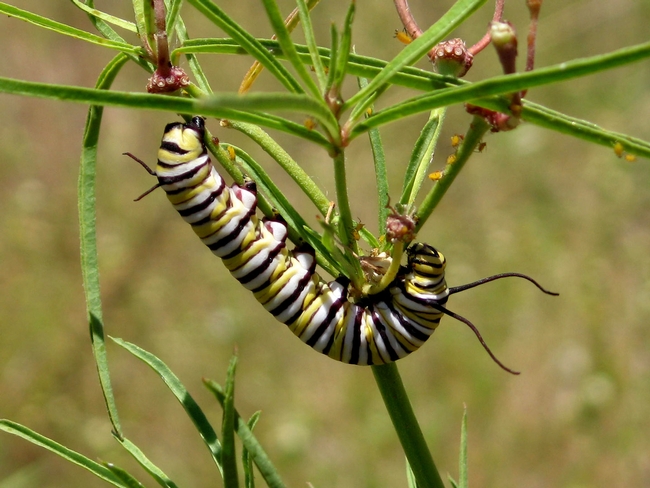The evolutionary biology of the Monarch butterfly (Danaus plexippus) and its mimics, such as the Viceroy butterfly, is full of fascinating intricacies, which most of us were exposed to during early-school science classes. However, the monarch's relation to the milkweed itself is really that of a simple herbivore ... whereas other insects have much more complex interactions with the plant.
Larvae (caterpillars) of the monarch butterfly feed on the foliage of milkweed, as the photo shows, and then store the plant's toxic alkaloids (toxic to most animals) in their tissues. These alkaloids make the caterpillars and the adult monarch butterflies unpalatable to predators such as birds. A bird, upon eating one, will become nauseous and therefore quickly learn to avoid eating the monarch butterflies. Of course, through mimicry, such look alike butterflies such as the Viceroy butterfly, which does not have the alkaloids within, are protected from predation by the "behavioral adaptation of prey aversion" of the predators.
Alkaloids are one of the largest groups of chemical arsenals that plants have evolved for protection over 130 million years, with over 10,000 different alkaloids identified. Many have medicinal uses for man (morphine), but many are toxic (tropane), hallucinogenic (psilocybin), are addictive stimulants (nicotine, caffeine, and cocaine), or are narcotic (opium and codeine).
